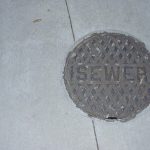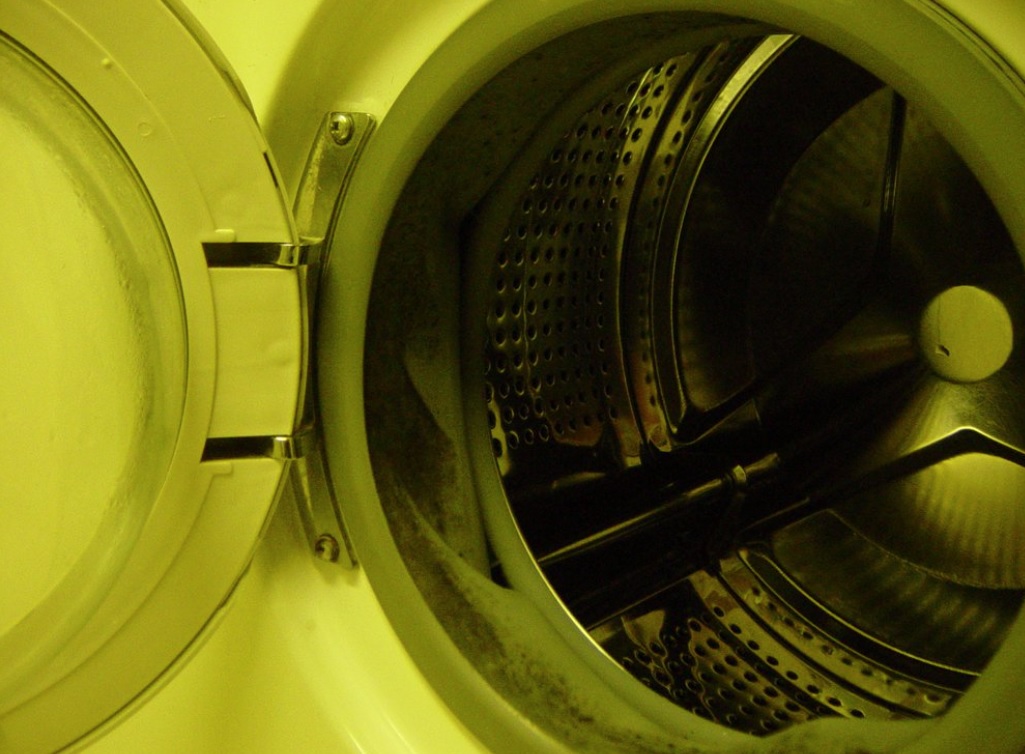A washing machine could be your best friend when it comes to laundry. However, after years of usage, your machine may not function properly. In that case, it may overflow.
However, even a new washing machine may also overflow. An overflowing washing machine can create a mess and it may take a long time to clean up that mess.
If you know – what is the actual cause behind the overflow, then you may fix it. That’s why some tips are discussed below. You can read them and you may be able to solve – why my washing machine is overflowing.
8 Reasons – Why Your Washing Machine Overflows
1) The Washing Machine is Overloaded
Every washing machine has its own capacity. If you put too many clothes in a machine, then the water may not find any place in it. Naturally, your washing machine may overflow. Moreover, an overloaded machine may vibrate heavily and this vibration may cause water leakages.
2) Damaged Hoses
Your washing machine has two hoses – 1) water inlet hose and 2) water outlet pipe/drain pipe. If any of these two hoses have leakage, then you may experience water on your floor. In the old machines, these hoses used to be shorter ones. Furthermore, if these hoses are old, then they may also cause water leakage problem.
3) Water Inlet Valve Not Functioning
The most common reason behind your washing machine overflow could be a faulty water inlet valve. The function of this water inlet valve is to control the flow of the water. Now, if this water inlet valve has any cracks on it or if it is too old, then the water may not stop going to the drum of the washing machine. A damaged water inlet valve needs to be replaced.
4) Water Level Sensor Malfunctioning
The water level sensor on a washing machine tells the machine – how much water it should take. If the sensor fails to detect the level of water, then your washing machine may overflow. Without the sensor, the machine would never be able to know the right amount of water it requires to wash the clothes.
5) Clogged Drain Pipe
A washing machine that has not been moved from one place and if the drain pipe has not been cleaned for a long time, then the drain pipe may get clogged. Once a drain pipe gets clogged, your washing machine may start to overflow because the water may not find a proper place to go out.
6) Drain Pump Has A Problem
Sometimes your washing machine may fail to pump out the water. There is a drain pump in every washing machine. If this drain pump malfunctions, then your washing machine may not pump out the water. As a result, your washing may overflow.
7) Wrong Installation of The Machine
The water inlet hose, the water outlet pipe, and the valves matter. During the installation, if these hoses are not tightly closed, then a washing machine may overflow. Apart from that, the floor on which the washing operates should not be slanted. As this may also cause water overflow.
8) Timer Is Not Functioning
A timer on a washing machine controls – when it will spin and how long it will spin. A damaged timer may not be able to control the spin and your washing machine may start spinning either too early or too late. Naturally, your washing machine may overflow.
How To Repair The Washing Machine That Overflows
1) Don’t Overload The Washing Machine
Many washing machine users ignore the instructions of the manufacturer. Every machine has a limit and the machine will struggle to wash if you cross that limit.
For example – 4 pound, 8 pound and 12 pound washing machines are there in the market. Now, your machine has got a maximum 8 pound of capacity. But you load your machine with more than 8 pounds. As a result, your machine may overflow.
Hence, before loading your machine, you must follow the manufacturer’s instructions and try not to overload the machine.
2) Check The Hoses
The hoses in your washing machine should not be too old. You should change these hoses once in 3 years. If you experience an overflow, then you should inspect the hoses closely. Any cracks on the hoses may cause an overflow. Moreover, the mouth of the hoses should also be tightened. Steel braided hoses are now the modern ones and they last long. Hence, try to replace your washing machine’s hoses with high-quality modern hoses.
3) Replace the Water Inlet Valve
The water inlet valve could also cause the washing machine to overflow. But before replacing the valve, you need to make sure that the water inlet valve is causing the problem.
So, How to test it –
First start to run a cycle. When the drum is filled more than halfway then you should unplug the machine. Now, your machine should not continue to fill the drum. But if it doesn’t stop even after getting unplugged, then the water inlet valve may not be functioning.
Replacing the Valve –
First of all, you should unplug the machine from the power source and you should also turn off the water flow (hot and cold water). Now you have to go to the back of the machine to remove the control panel.
Here, after removing the control panel, you may see the inlet valve. The valve will have inner water hoses and wire connectors. Your task will be to remove these connectors and water hoses.
After this, you can unscrew the valve and you can replace the valve with a new one. Just close the control panel and your washing machine will have a new water inlet valve.
4) Water Level Sensor and Timer – Check Them
Sometimes the water level sensor or the timer may not function. In that case, you may have to replace the sensor and the timer. To replace the water level sensor, you should first turn off the water valves and you should unplug the machine. Then, you can open the control panel. After that, you can see a dial-shaped sensor. Just remove the water hose and replace the sensor.
To replace the timer, you may have to follow the same process. But the timer could be a large one in size. If your washing machine is failing to spin on time, then the timer of your washing machine may not be working.
5) Unclog The Drain Pipe
A clogged drain hose or pipe means the water from your washing machine may not get out. So, you have to clean it. To clean the drain pipe, you have to remove it from the washing machine.
Unplug your washing machine and stop the water supply to the machine. Then, open the back panel of your washing machine and remove the water outlet hose. After that, you can clean it with warm soap water. You should do this every 2 years. In this way, you can keep your water pipe clean.
6) Install The Machine Properly
Because of the wrong installation, even a new washing machine may overflow. So, check the water inlet and outlet hoses when you are installing the machine. Moreover, the washing machine should be on an even ground and the hoses should be tightly fixed. Test your machine before running a cycle. In this way, you can be sure that your washing machine has been installed properly.
7) Inspect The Drain Pump
A damaged drain pump may not be able to pump out the water. So, you may have to open your washing machine to replace it. But replacing a drain pump could be a laborious task. You may have to remove the front section of the washing machine. Then you may have to unplug many hoses.
If you think that it’s a complicated process or it may not be possible for you to find the right drain pump, then you can call the professionals.
What To Do If Your Washing Machine Overflows
1) Cut the power supply
When a washing machine overflows, it may first cause an electrical problem. That’s why in case a washer overflows, you should first cut the power supply of your entire house. The water may enter other appliances or the water may enter electric sockets. In that case, the water may cause extremely bad accidents. So, it would be wise to stop the power supply. You can cut the power supply from the circuit breaker.
2) Don’t press any switch on the washing machine
A lot of people try to ‘Cancel’ the cycle after a machine overflows. But this may not be a wise idea. As the machine may try to drain out all the water before ending the cycle. That’s why the power supply should be stopped and you should not press a switch on the machine.
3) Try to keep things away from the washer
Things around your washing machine may get wet. Hence, whenever you experience a washing machine overflow, try to keep things away from it as soon as you can. Rugs, clothes, chairs, and any pieces of equipment should not be around the washer. In this way, you can save many things in your house.
4) Get a mop and bucket
Now, you have to clean the water. So, you need a mop and bucket. You have to wipe the floor and you have to make your room dry. Squeeze out the floor water in the bucket. If the overflowed water is too much, then you can use dry clothes to absorb the water. Later you can dry those damp clothes.
5) Remove all the clothes from the washing machine
When the washer overflowed, it had clothes inside it. Now, you should not keep those clothes inside it. You can remove those clothes and you can hang them under the sun. Thus, you can save your clothes.
6) Inspect the extent of the damage
To inspect the extent of the damage, you have to drag your washing machine away from the wall. Then you have to inspect the floor and the wall for mold. If mold is there, it means your washing machine might have been leaking for a long time. Apart from that, you have to check the hoses. Your primary aim would be to detect any abnormality in and around your washing machine. If you fail to detect anything, then you can call for professionals.
Washing Machine Overflows: When and Why To Call A Professional
1) Repairing A Washing Machine Could Be A Time-Consuming Job
A washing machine has got tons of screws and nuts. If you are going to repair it for the first time, then it may take long hours to open it. Professionals know – how to open each model. So, professionals can repair a washing machine within a short time.
2) Finding The Right Part
When a washing machine overflows, it may require a new part. But you may not know – how or where to find a new part. Professionals know and they can find a compatible part for your machine. This means you may not have to search for the parts as professionals will get it.
3) Professionals Have The Right Tools To Check The Parts
Before buying a part, you need to check the old part. But you may not have got all the tools to check a washing machine part. So you may end up buying a part that is perfectly healthy. Experts know – how to test your washing machine’s parts. Hence, before buying a part, a professional can test it with the proper tools. This way you buy the part that your machine really require.
4) To Extend The Life Of Your Washing Machine
A professional can inspect your machine precisely. As a result, the professional can replace and repair all the parts of your machine. Naturally, your washing machine gets a new life.
A washing machine that overflows may not only damage itself but the things around it also. So, you should repair it as quickly as you can. You can repair it yourself. However, if you want to save time and labor, then you can call a professional to repair your washing machine.





